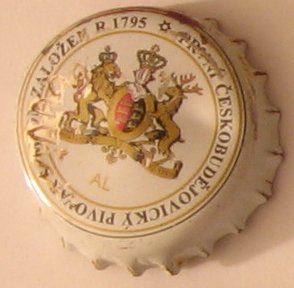This is a list of settlements and places of interest in Devon, England.
A
Abbots Bickington
Abbotsham
Abbotskerswell
Alverdiscott
Appledore (Mid Devon)
Appledore (North Devon)
Arlington
Ashburton pop. 3,500
Ashcombe
Ashford
Ashprington
Ashreigney pop. 446
Ashton
Ashwater
Atherington
Aulers
Aveton Gifford
Awliscombe
Axminster pop. 6,000
Axmouth
Aylesbeare B
Bampton
Bantham Cross
Barnstaple
Beaford
Beaworthy
Beer
Beesands
Belstone
Bere Alston
Bere Ferrers
Berry Head
Berrynarbor
Berry Pomeroy
Bickingtom
Bickleigh
Bicton
Bideford
Bigbury
Bishop's Nympton
Bishop's Tawton
Bishopsteignton
Bittadon
Blackawton
Black Torrington
Bondleigh
Bovey Tracey
Bow
Bradford
Bradninch
Bradstone
Bradworthy
Brampford Speke
Branscombe
Bratton Clovelly
Bratton Fleming
Braunton
Brendon
Brentor
Bridestowe
Bridford
Bridgerule
Brixham
Brixton
Broadclyst
Broadhembury
Broadhempston
Broadwoodkelly
Broadwoodwidger
Brushford
Buckerell
Buckfastleigh
Buckland Brewer
Buckland Filleigh
Buckland in the Moor
Buckland Monachorum
Buckland Tout Saints
Budleigh Salterton
Bulkworthy
Burgh Island
Burlescombe
Burrington, Devon
Butterleigh C
Cadbury
Cadeleigh
Calverleigh
Chagford
Challacombe
Chardstock
Charles
Charleton
Chawleigh
Chelfham
Cheriton Bishop
Cheriton Fitzpaine
Chillington
Chittlehamholt
Chittlehampton
Chivelstone
Christow
Chudleigh
Chudleigh Knighton
Chulmleigh
Churchstow
Churston Ferrers
Clawton
Clayhanger
Clayhidon
Clovelly
Clyst Honiton
Clyst Hydon
Clyst St. George
Clyst St. Lawrence
Clyst St. Mary
Cockington
Coffinswell
Colaton Raleigh
Coldharbour
Coldridge
Colebrooke
Colyford
Colyton
Combe Martin
Combe Raleigh
Combeinteignhead
Combpyne
Cookbury
Copplestone
Cornwood
Cornworthy
Coryton
Cotleigh
Countisbury
Crazelowman
Crediton
Crockernwell
Crowden
Croyde
Cruwys Morchard
Cullompton
Culmstock D
Dalwood
Dartington
Dartmouth
Dawlish
Dean Prior
Devonport
Diptford
Dittisham
Doddiscombsleigh
Dolton
Dowland
Down St. Mary
Drewsteignton
Dunchideock
Dunkeswell
Dunsford
Dunterton E
East Allington
East Anstey
East Buckland
East Budleigh
East Down
East Portlemouth
East Putford
East Worlington
Eggesford
Ermington
Exbourne
Exeter
Exminster
Exmouth G
Galmpton
Georgeham
George Nympton
Germansweek
Gidleigh
Gittisham
Goodleigh
Great Torrington H
Haccombe
Halberton
Haldon
Hallsands
Halwell
Halwill
Harberton
Harbertonford
Harford
Harpford
Hartland
Hatherleigh
Hawkchurch
Heanton Punchardon
Heathfield
Heavitree
Hele
Hemyock
Highampton
High Bray
Hittisleigh
Holbeton
Holcombe Burnell
Holcombe Rogus
Holsworthy
Honeychurch
Honiton
Hope Cove
Horwood
Huish
Huntsham
Huntshaw
Huxham I
Iddesleigh
Ide
Ideford
Ilfracombe
Ilsington
Instow
Inwardleigh
Ipplepen
Ivybridge
Jacobstowe K
Kelly
Kenn
Kennerleigh
Kentisbeare
Kentisbury
Kenton
Kilmington
Kingsbridge
Kingskerswell
King's Nympton
Kingsteignton
Kingston
Kingswear
Knowstone L
Lamerton
Landcross
Landkey
Langtree
Lapford
Leigham
Lewtrenchard
Lifton
Littleham, East Devon
Littleham, North Devon
Littlehempston
Little Torrington
Loddiswell
Loxbeare
Loxhore
Luffincott
Lundy
Luppitt
Lustleigh, Teignbridge
Lydford
Lympstone
Lynton
Lynmouth
Malborough
Mamhead
Manaton
Mariansleigh
Marldon
Marwood
Marystow
Mary Tavy
Meavy
Meeth
Meldon
Membury
Merrivale
Merton
Meshaw
Milton Abbot
Milton Damerel
Modbury
Molland
Monkleigh
Monkokehampton
Monkton
Morchard Bishop
Morebath
Moretonhampstead
Mortehoe
Morwellham
Musbury N
Newton Abbot
Newton Ferrers
Newton Poppleford
Newton St. Cyres
Newton St. Petrock
Newton Tracey
Northam
Northleigh
Northlew
North Molton
North Tawton
Noss Mayo
Nymet Rowland
Nymet Tracey O
Oakford
Offwell
Ogwell
Okehampton
Otterton
Ottery St. Mary P
Paignton
Pancrasweek
Parkham
Parracombe
Payhembury
Pennymoor
Peters Marland
Peter Tavy
Petrockstowe
Pilton
Pinhoe
Plymouth
Plympton
Plymstock
Plymtree
Poltimore
Portlemouth
Postbridge
Poughill
Poundstock
Powderham
Prawle
Princetown
Puddington
Putsborough
Pyworthy Q
Queen's Nympton R
Rackenford
Rattery
Rewe
Ringmore
Roborough
Rockbeare
Romansleigh
Rose Ash
Rousdon S
Salcombe
Salcombe Regis
Sampford Courtenay
Sampford Peverell
Sampford Spiney
Sandford
Satterleigh
Saunton
Seaton
Shaldon
Sharpham
Shaugh Prior
Shebbear
Sheepstor
Sheepwash
Sheldon
Sherford
Shirwell
Shobrooke
Shute
Sidbury
Sidmouth
Silverton
Slapton
Sourton
South Brent
Southleigh
South Molton
South Tawton
South Zeal
Sowton
Spreyton
St. Giles in the Heath
St. Giles in the Wood
Starcross
Stibb Cross
Sticklepath
Stockland
Stockleigh English
Stockleigh Pomeroy
Stoke Canon
Stoke Damerel
Stoke Fleming
Stoke Gabriel
Stokeinteignhead
Stokenham
Stoke Rivers
Stoodleigh
Stowford
Strete
Sutcombe
Swimbridge
Sydenham
Sydenham Damerel T
Taddiport
Talaton
Tamerton Foliot
Tavistock
Tawstock
Tedburn St. Mary
Teigngrace
Teignmouth
Tetcott
Thornbury
Thorverton
Throwleigh
Thrushelton
Thurlestone
Tiverton
Topsham
Torbryan
Torcross
Torquay
Totnes
Trusham
Twitchen U
Uffculme
Ugborough
Uplowman
Uplyme
Upottery
Upton Hellions
Upton Pyne V
Virginstow W
Walkhampton
Warkleigh
Washfield
Washford Pyne
Way Village
Weare Giffard
Welcombe
Wembury
Wembworthy
West Down
Westleigh
Westward Ho!
Whimple
Whitchurch
Whitestone
Widecombe-in-the-Moor
Widworthy
Willand
Winkleigh
Witheridge
Woodbury
Woodleigh
Woolacombe
Woolfardisworthy/"Woolsery" (North Devon)
Woolfardisworthy (South Devon)
Worlington X
Y
Yarcombe
Yarnscombe
Yawl
Yealmpton
Yelland
Yelverton Places of interest
Berry Head
Buckfast Abbey
Castles in Devon
Dartmoor
Exmoor
Heritage railways:
- Babbacombe Cliff Railway
Bideford & Instow Railway
Dartmoor Railway
Lynton & Barnstaple Railway
Paignton & Dartmouth Steam Railway
Plym Valley Railway
South Devon Railway
Jurassic Coast (a World Heritage Site)
Lundy Island
Lynmouth
Whimple
 Biblical narrative
Biblical narrative